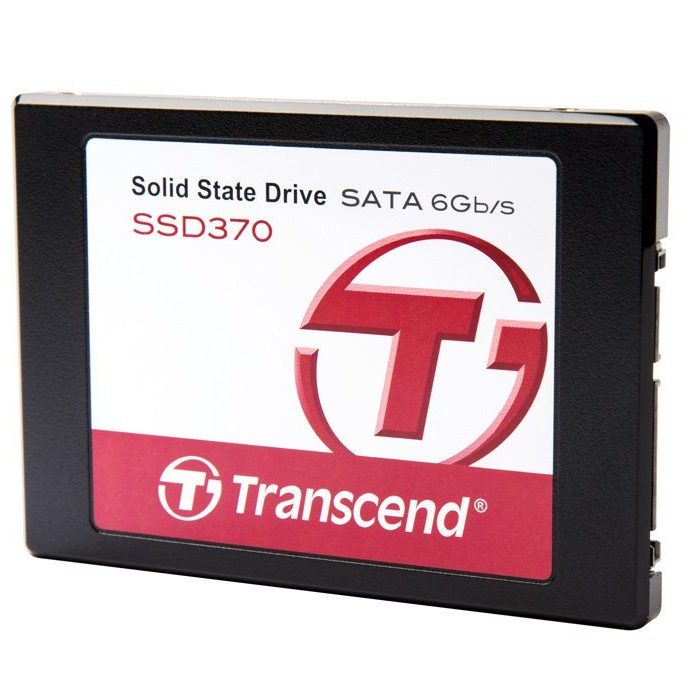Early Verdict
Transcend continues to fight for SSD sales, but going up against flash manufacturers is a tough game. The SSD370S usually sits firm on pricing while others ride the tide up and down. Choosing this SSD over others often depends on prices dictated by other companies.
Pros
- +
The Transcend SSD370S features MLC flash and ships with management software. Performance is mainstream, and when you can find it on sale, it does compete with entry-level products on price.
Cons
- -
Transcend has failed to aggressively and continuously keep the SSD370 512GB price low enough to compete with other products that deliver better value. Random performance is often lower than on competing products in this class of SSDs.
Why you can trust Tom's Hardware
Specifications, Pricing, Warranty And Accessories
Now that Crucial has discontinued the BX100 and replaced it with a TLC-based disaster, other entry- and mid-level SSDs have an opportunity to shine. Transcend's SSD370S uses roughly the same configuration as the BX100 and Mushkin Reactor—two products that offer excellent value at the 512GB and 1TB capacity points.
This is the second SSD370 we've tested. The first, a 256GB implementation, shipped to us in a plastic case with undesirable SpecTek flash (read the Transcend SSD370 Review). After discussing that drive's issues with Transcend, we learned that the aluminum SSD370S differs from the base SSD370 in more ways than its product page indicates. Transcend tells us that its SSD370S employs Micron flash exclusively, addressing our biggest concern with the SSD370.
As a result, we expected our SSD370S to utilize genuine Micron 16nm synchronous MLC, but that's not what we found when we opened the SSD up. Transcend is either packaging flash, or purchasing NAND at the wafer level and having it binned and packaged. There is no way for us to tell what type of flash the SSD370S actually uses, other than to take Transcend's word that this model ships with the Micron stuff it claims.
Specifications
MORE: Best SSDs For The Money
MORE: Latest Storage News
MORE: Storage in the Forums
Transcend released its SSD370S in capacities ranging from 32GB to 1TB. The two largest models offer the best value and serve up the highest performance. Transcend isn't explicit about each capacity's performance, but rather conveys specifications with an "up to" ceiling.
The SSD370S uses a rebadged Silicon Motion SM2246EN controller paired with Samsung DDR3 and Micron 16nm MLC synchronous flash. According to Transcend, sequential read performance tops out at 560 MB/s and sequential writes peak at 460 MB/s. Random reads and writes are both rated at 75,000 IOPS. That number is higher than what Mushkin specifies its Reactor for, but lower than Crucial's no-longer-made BX100.
Pricing, Warranty And Accessories
We found the SSD370S 512GB for as low as $176 at B&H Photo and Amazon. Newegg also has it in stock, but at a higher price of $206. Transcend covers the SSD370S with a three-year warranty.
Get Tom's Hardware's best news and in-depth reviews, straight to your inbox.
The drive ships with a desktop adapter bracket, mounting screws, a paper manual, an installation guide and a few advertisements for Transcend's other products. This model also works with Transcend's SSD Scope software for easy access to secure erase, viewable wear indicators and other tools.
A Closer Look
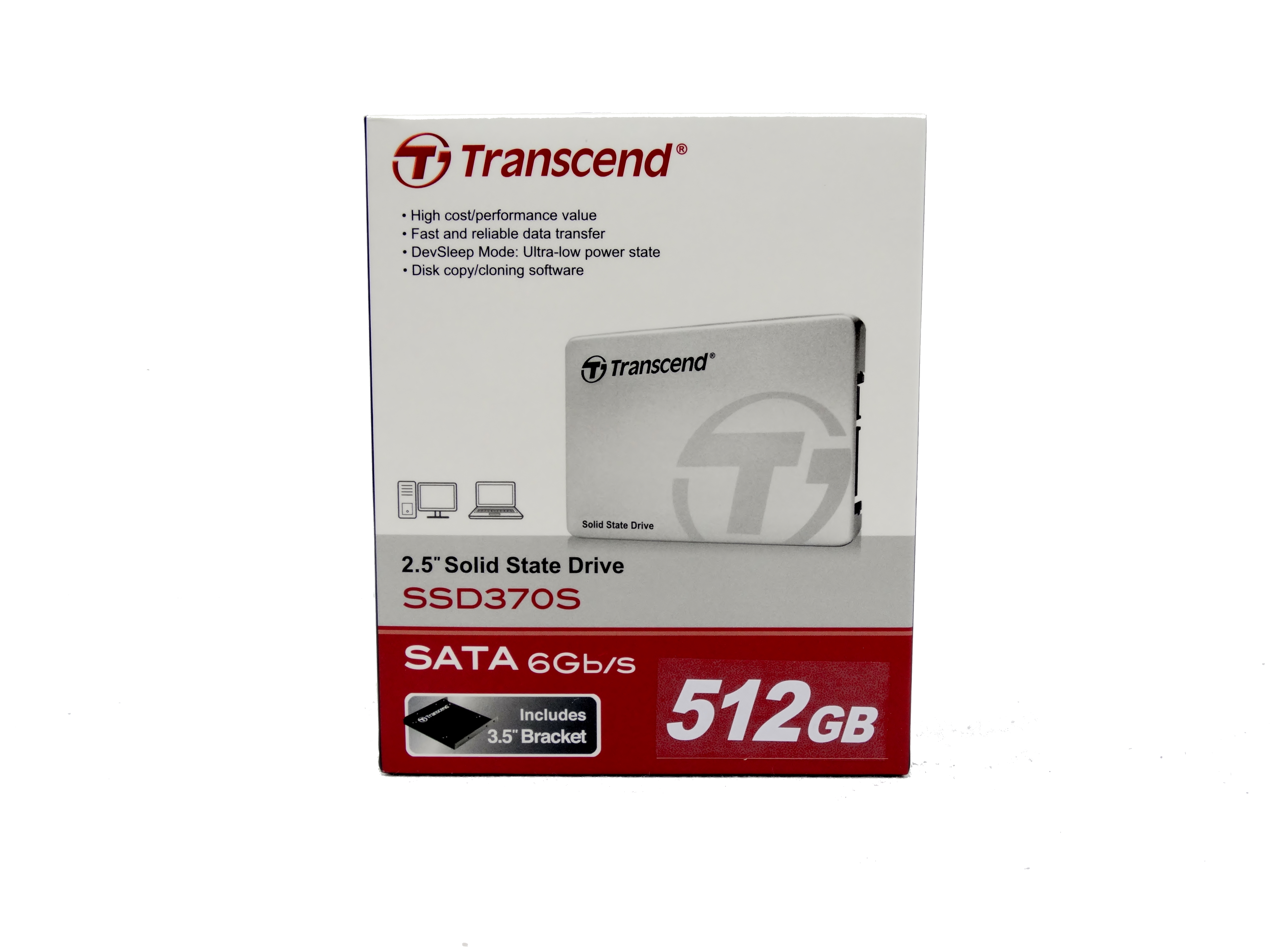
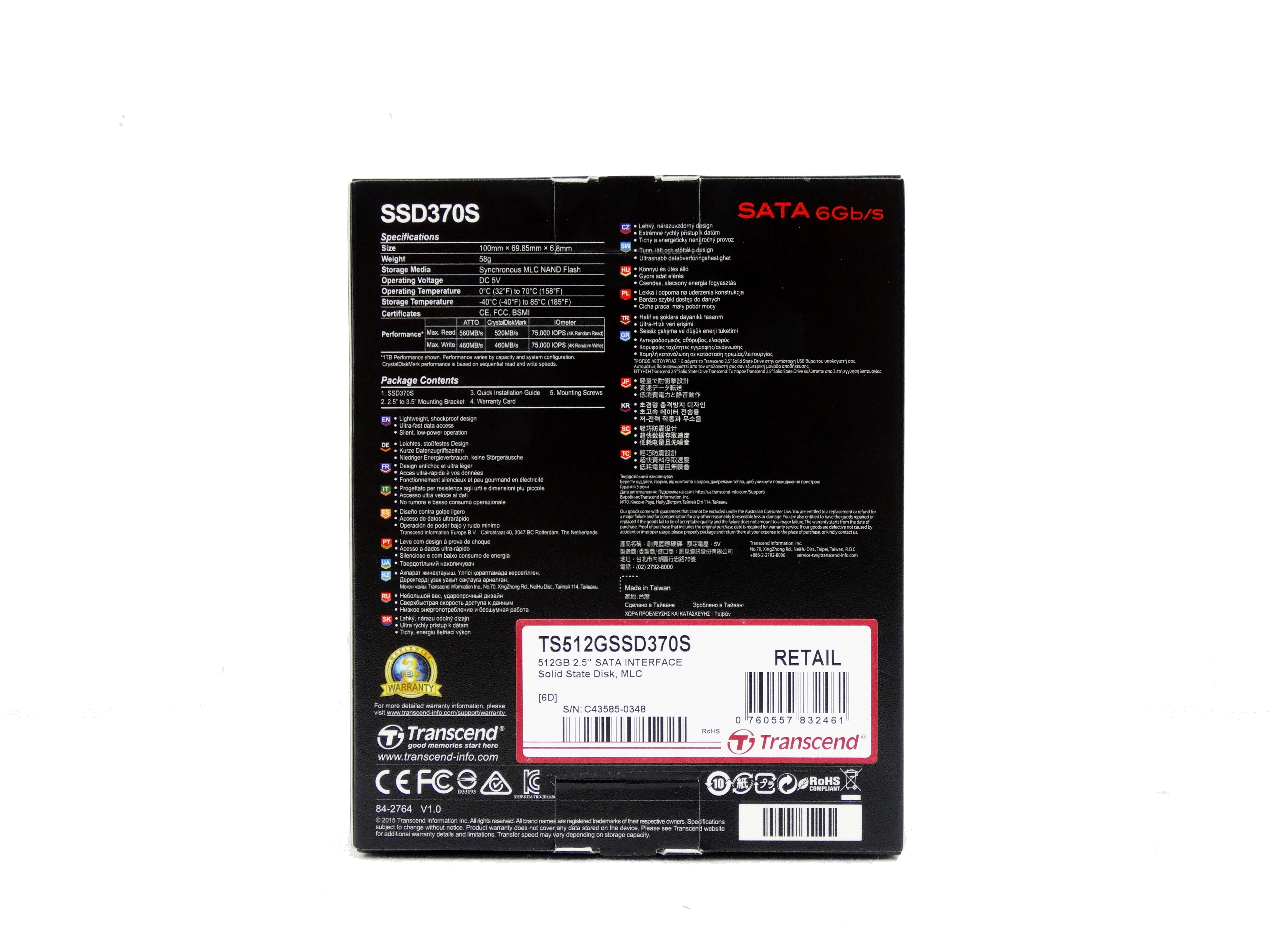

The SSD370S ships in a retail-friendly package that lists performance specifications and limited warranty terms. It's rare to get a desktop adapter these days, but we don't mind the value-add.


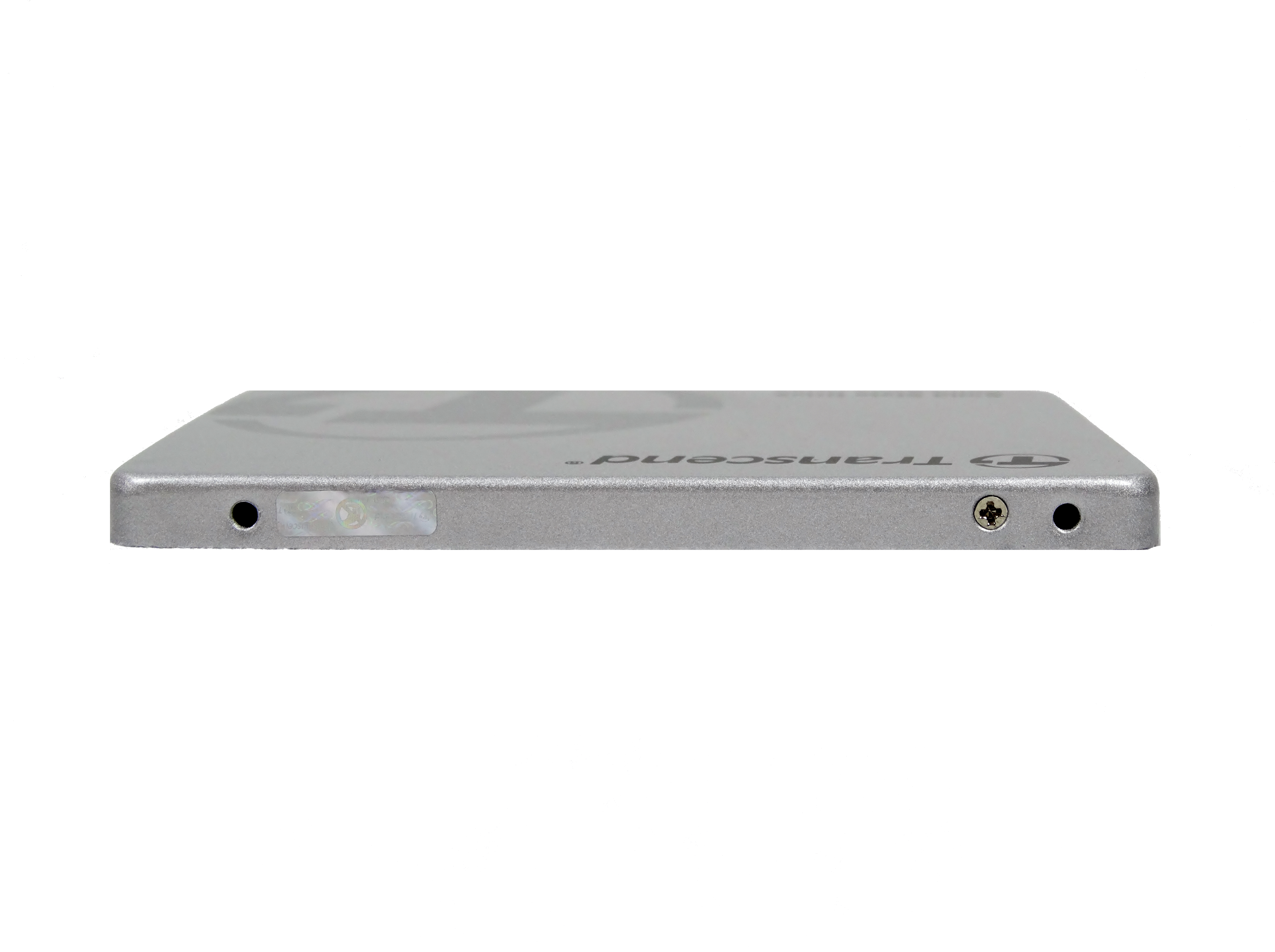
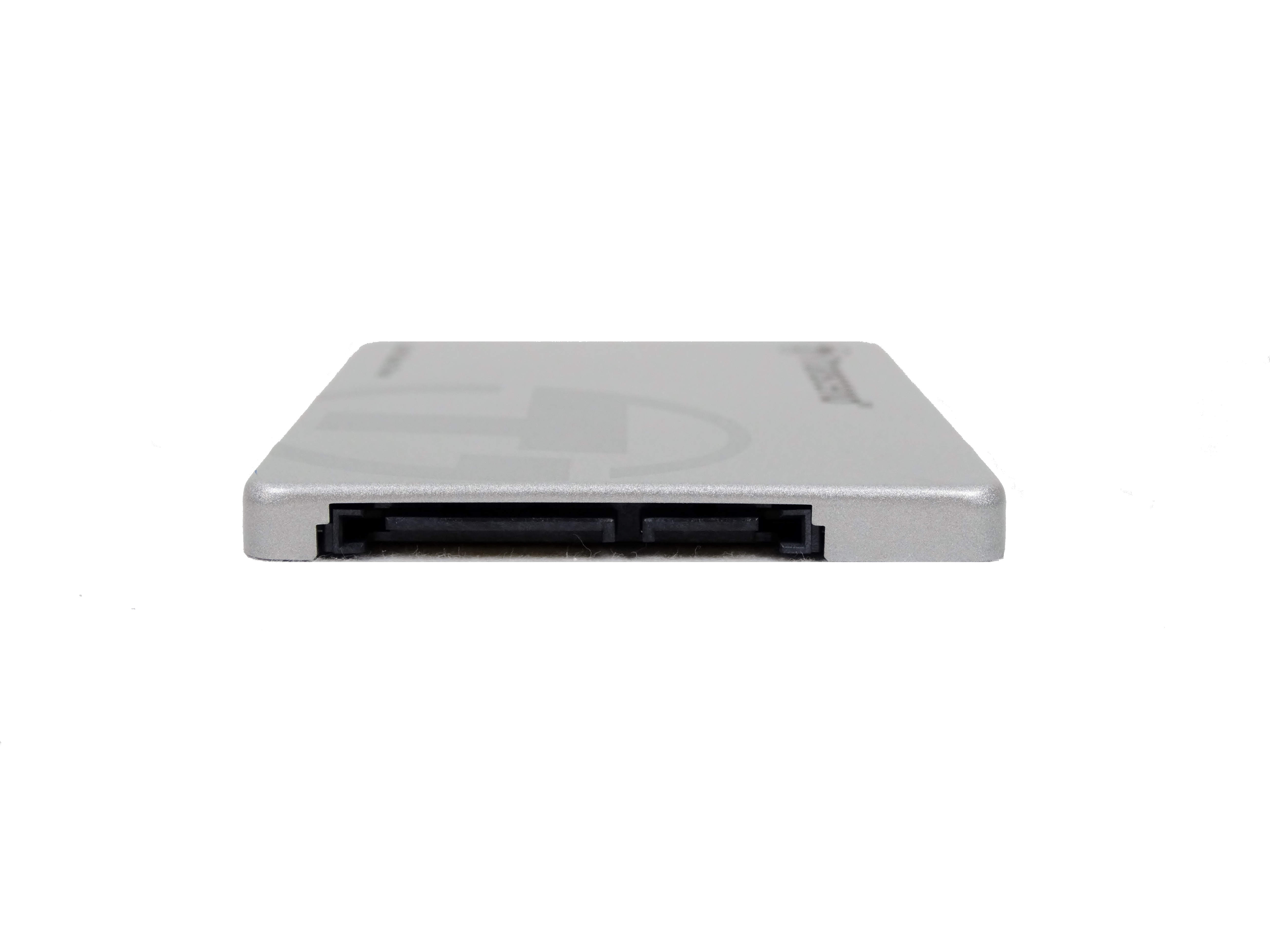
Everything about the drive's physical dimensions is standard. Its 2.5-inch form factor features a 7mm z-height, so it fits in newer notebooks that require the slim design. You can only get the SSD370S in a silver-painted aluminum enclosure adorned with a few logos.
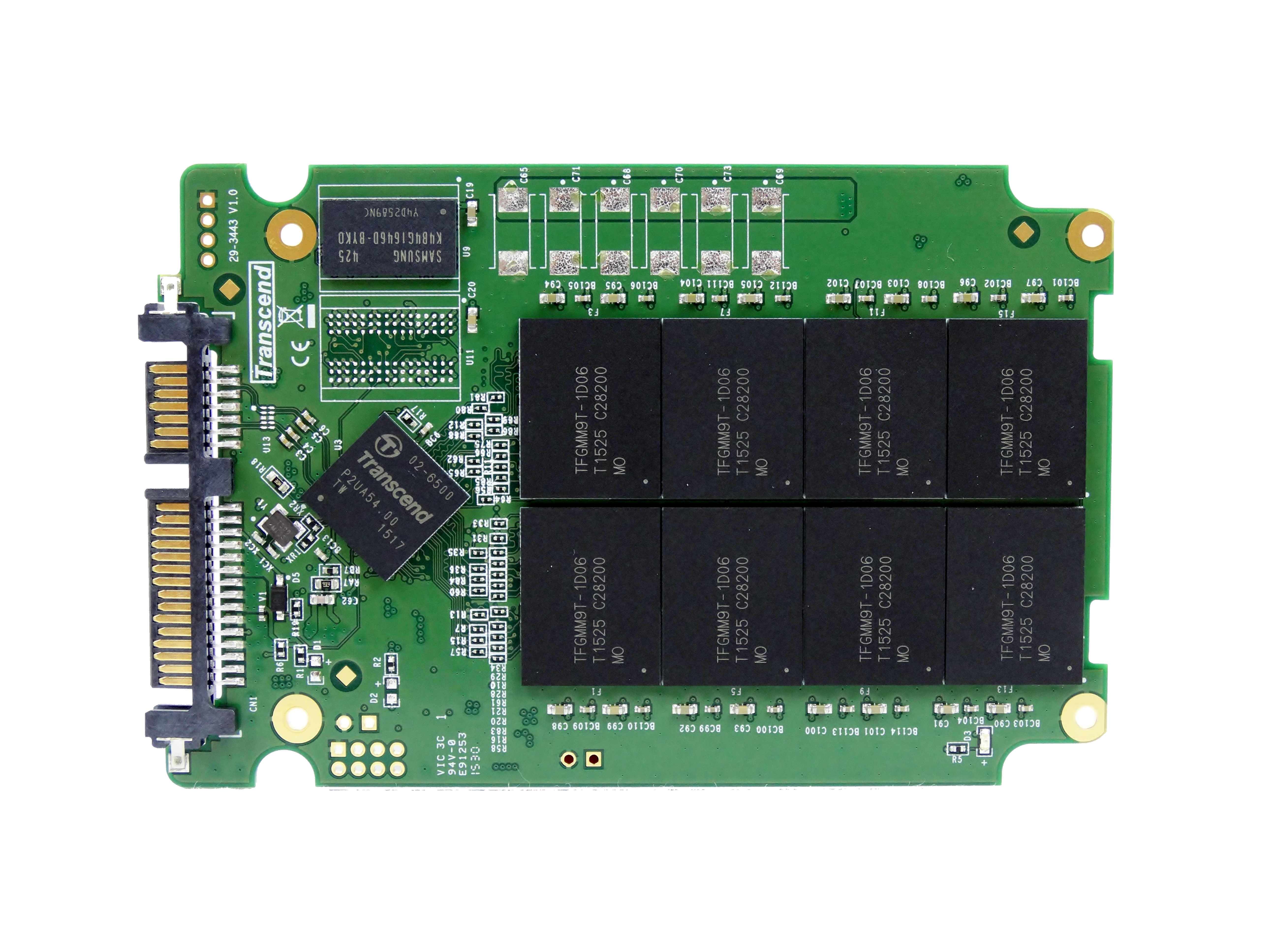
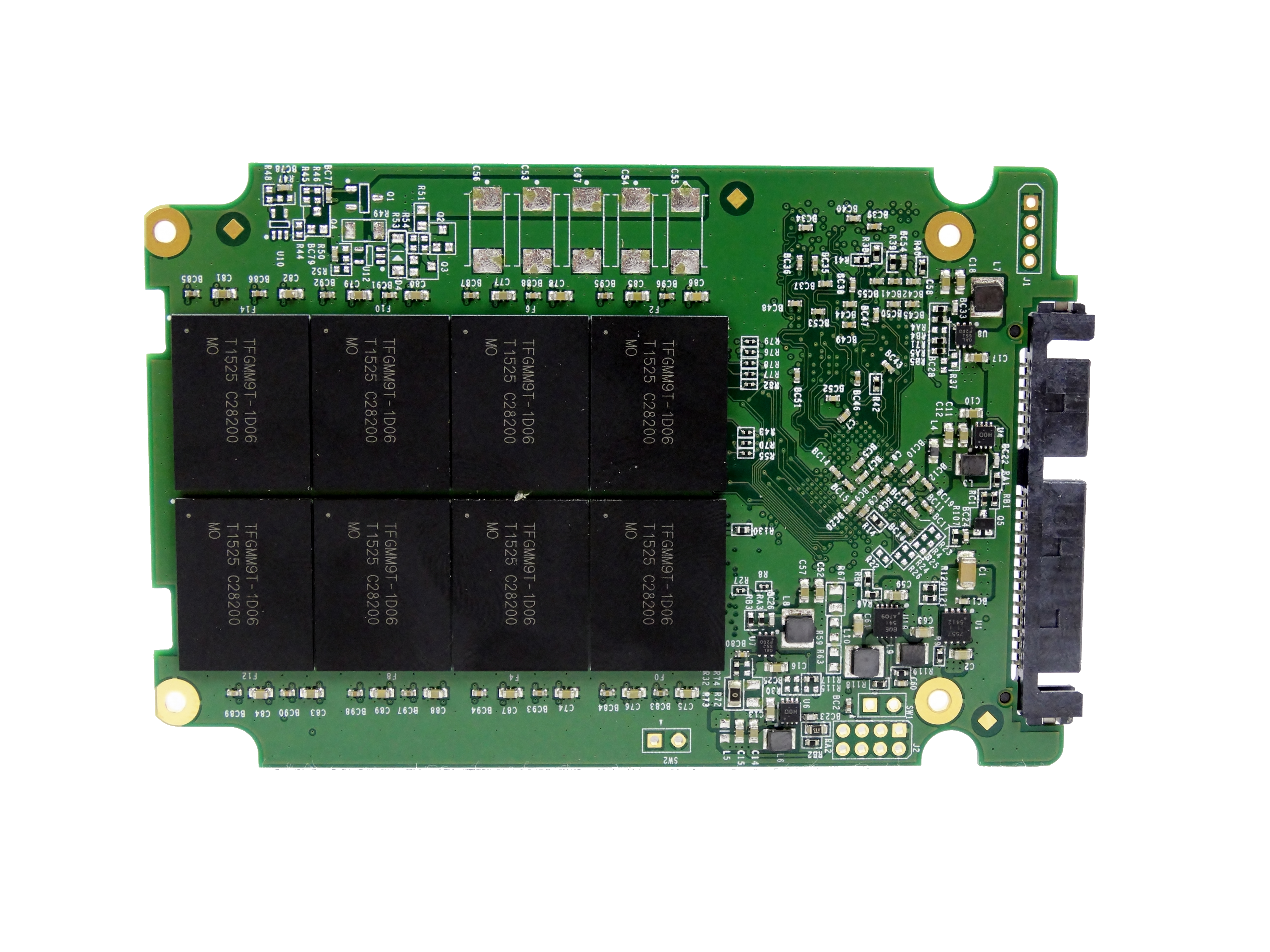
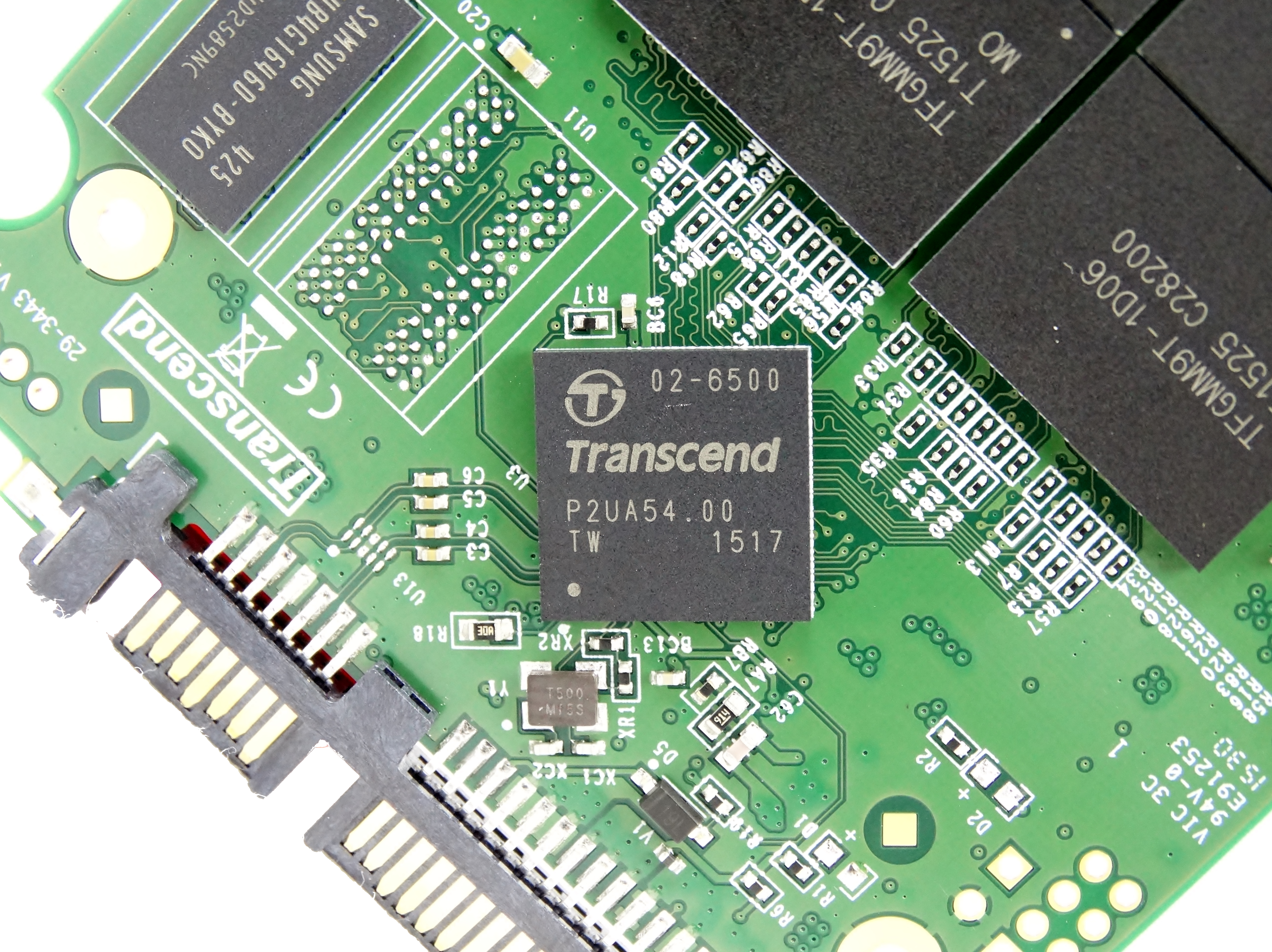

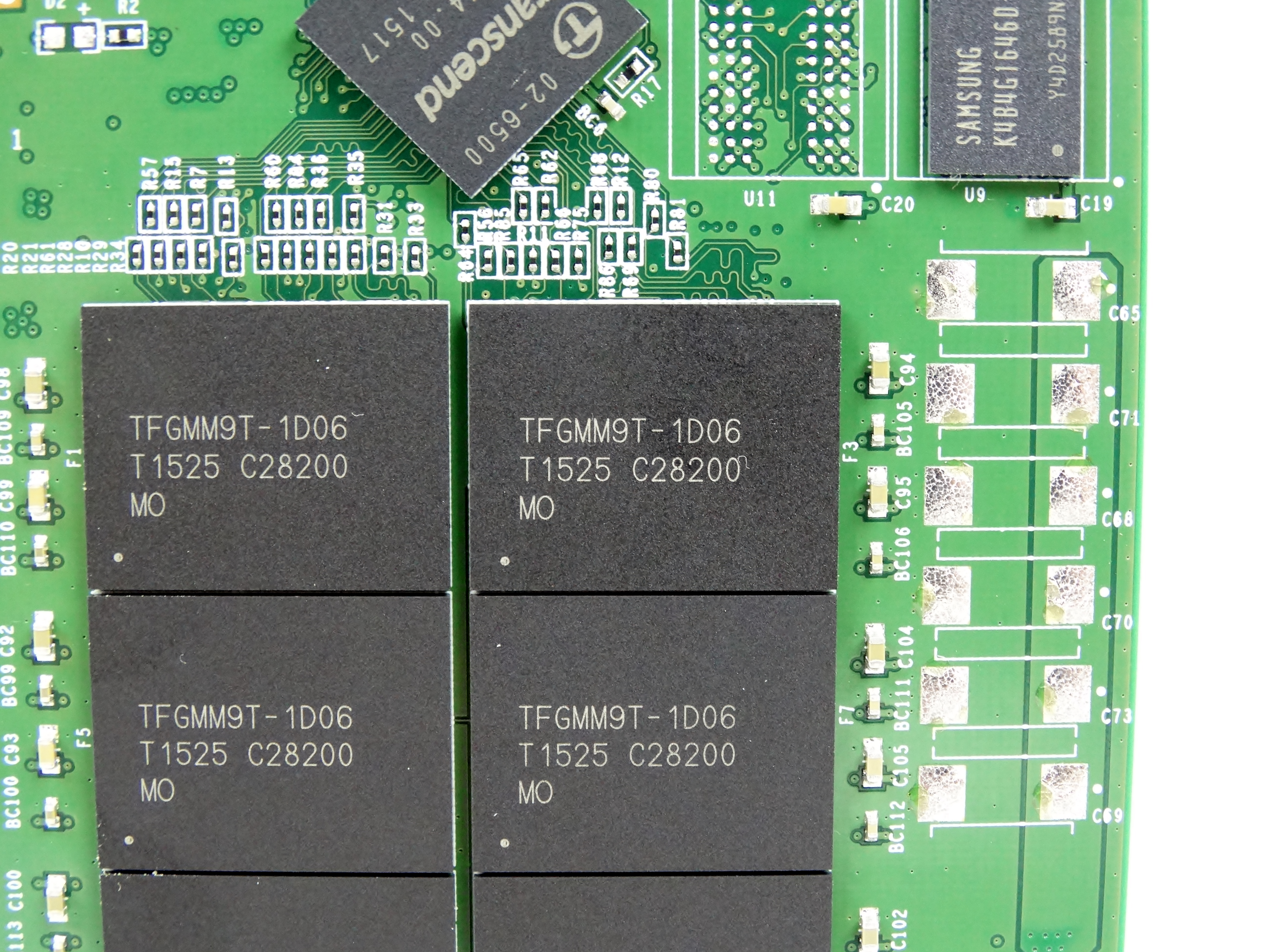
Inside the SSD, we find Transcend's TS6500 controller, a rebadged Silicon Motion SM2246EN with custom firmware. This is a low-power, four-channel processor that supports DevSlp. Transcend pairs its controller with Samsung DRAM and Micron 16nm MLC flash.
Current page: Specifications, Pricing, Warranty And Accessories
Next Page Four-Corner Testing
Chris Ramseyer was a senior contributing editor for Tom's Hardware. He tested and reviewed consumer storage.
-
Co BIY If the Crucial BX100 is no longer available I don't think it belongs in the performance comparison charts. Although I see the value for analyzing the trends in the market it doesn't reflect the current state and gives Crucial undeserved positive exposure for a product they can no longer even bring to market.Reply
Seems that value SSDs are one area where we are not getting continuous performance improvement but instead some backslide. -
CRamseyer The BX100 is far from an obsolete product since anyone can still purchase the series at Newegg, Amazon and a number of other online stores. I would even go as far as to say some are still on retail shelves. It is also a product that many people know and can use to compare performance against.Reply
I do agree with your comment on mainstream performance moving the wrong direction. It's a trend we will have to live with until Toshiba, Micron and SK Hynix move to 3D like Samsung. Micron appears to be the first with some 3D flash expected in June or July. 2D TLC will survive and make up the entry-level sector. 3D TLC and 3D MLC will account for the mainstream and performance sectors of the market. -
Tony37x Your pricing on the Samsung 850 EVO 500GB is very misleading - It's actually less than both of these in the article @ $149 NOT $270!!! No brainer, go with the top-rated Samsung :)Reply
http://www.amazon.com/gp/product/B00OBRE5UE/?tag=bom_tomshardware-20 -
jai_123 Do you suggest using SSD370 on a RAID 1 ? I am planning to create a RAID 1, not yet finalized to choose a OS based RAID or use a cheap HW RAID adapter.Reply -
CRamseyer With RAID 1 you don't have to worry about the Yahtzee effect. In my next RAID Report I'll explain it with some additional detail.Reply
Most SSDs will work fine in RAID 1. -
shaolin95 So for someone with a SATA II only system trying to extend the life of anotherwise powerful system, is the 850 EVO the best option?Reply

